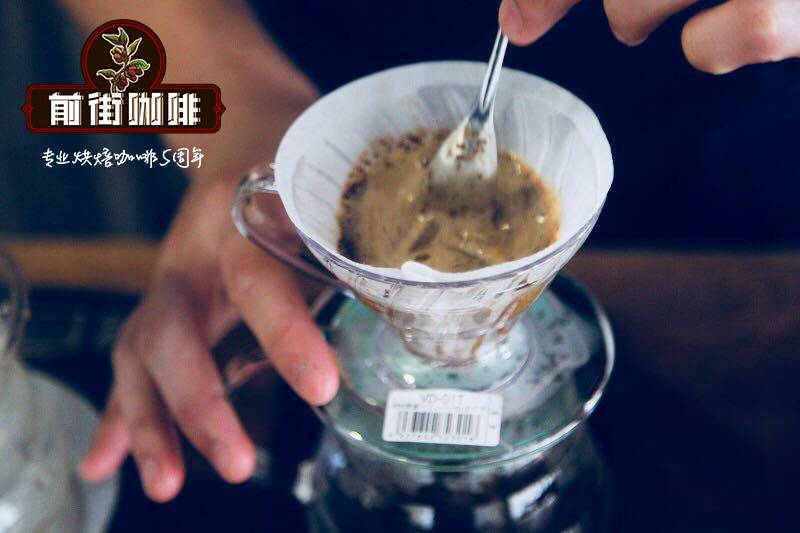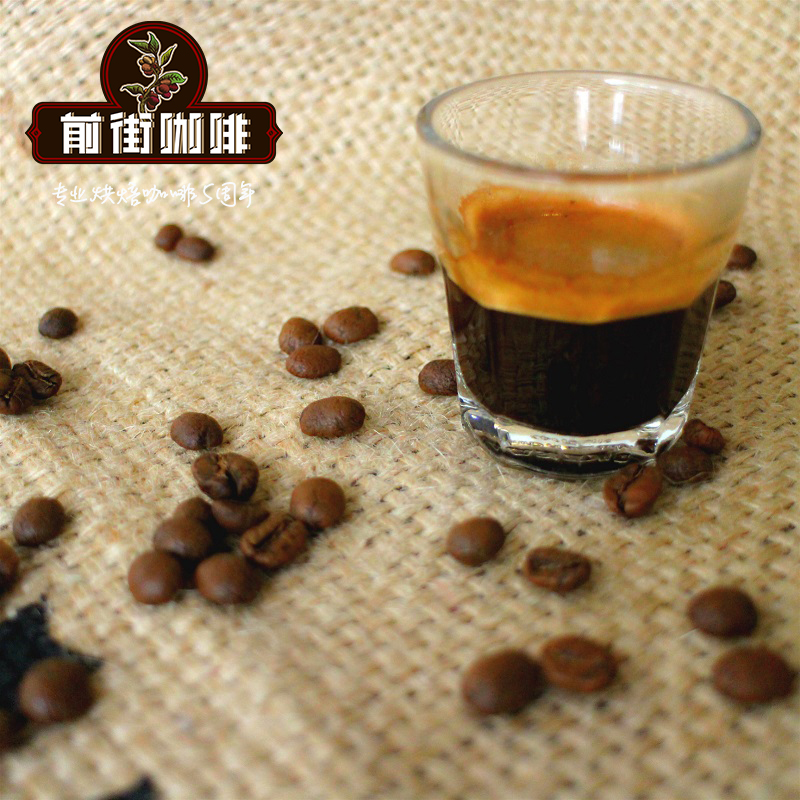The origin of coffee hand filter cup what are the types of filter cup?
Hand brewing is the most popular way in the third wave of boutique coffee, not only because of its beautiful appearance, but also because of its playability, controllability and ability to meet the needs of different coffee lovers. Hand brewing can better show the flavor of different producing areas, different estates and different coffee. Boutique coffee will be the main trend of coffee development in the world in the future.
Coffee filter cup is an instrument for extracting and filtering coffee. Its main function is to hold the filter paper, so that the filter paper can effectively separate coffee grounds and coffee liquid, which is equivalent to a "support". There are a variety of filter cups on the market, more and more, this article mainly introduces how to distinguish their differences, how to choose.
? I. the origin of the hand filter cup
The world's first filter cup was invented by a wife named Mellita in Germany. Mellita was born in a small town in Germany in 1837 and loves coffee. One day in 1906, Mrs. Mellita suddenly felt that the coffee was not pure enough, so she drilled a hole under the cup and put her son's painting paper on it to see if she could drink purer coffee. This is the emergence of the world's first coffee filter cup. Later, the filter cup was gradually improved and officially put into production in Germany in 1912, and the patent was declared and obtained in 1937. Since then, hand-dripping coffee has become popular in Japan, South Korea, Taiwan and other parts of the world, and until now the third wave of boutique coffee has swept the world, leading to boutique coffee extraction. ? II. Material
Common coffee filter cup materials are plastic, glass, ceramic and metal, acrylic, AS resin and so on. Each has its own characteristics, pay attention to the metal filter cup may rust, so every time it is best to dry, put in a ventilated place. In addition to the above-mentioned most commonly used materials, there are heat-resistant glass, aluminum alloy, tin, stainless steel and other materials, and even in some hot climate producing countries in Southeast Asia, there are pure natural and environmentally friendly coffee filter cups woven with plants such as bamboo and Zongma.
The flavor of the coffee brewed by the filter with the same shape but different material is slightly different, and the material has little effect on the coffee flavor. The specific choice depends on individual preferences and willingness to invest economically. In fact, this is not high-tech, as long as the coffee filter cup can meet the three basic conditions of filtration, ventilation and heat preservation, it can make good coffee. ? Third, the function of filter cup
(1) the main function of filter cup is to support, only flannel does not need "filter cup", metal filter itself is also a filter, so it does not need support.
(2) it is worth mentioning that the groove on the filter cup acts as a gap between the filter paper and the filter cup after water injection, thus affecting the flow of water and the extraction of coffee. With different brands, the structure of the design groove is also different.
Here we briefly mention what happened in the filter cup while making coffee by hand.
When we make coffee by hand, after the coffee powder touches the hot water, the carbon dioxide in the powder will be discharged out of the bean powder along with the soluble matter, and the gas will have a place to come out, and the groove will work. It forms a gap between the filter paper and the filter cup so that these gases can be discharged from the side. Fan-shaped filter cup (trapezoidal filter cup, table-shaped filter cup)
The bottom of the fan is usually one hole, two holes, three holes, the flow rate is slow, so the coffee extraction time will be longer, we should pay attention to the use of filter paper and filter cup fit degree, if the filter paper will fit the lower hole, that may cause the flow rate is too slow to cause excessive extraction, coffee bitterness, so should choose to match rather than fully fit. KALITA 101Coffee fan
The design of this shape was designed together when Melitta Bentz made coffee filter paper in 1908. At first, it was a single-hole design, but later improvements led to the emergence of more holes. Several holes determine the flow rate, depending on the number of holes that each person needs for coffee.
Conical filter cup
In addition to the fan shape, nothing is most common in the market than the tapered filter cup. Most of the difference lies in the groove design of the cup body. The groove is the channel that allows the coffee extract to flow into the cup, so the design of the groove also affects the flow rate. Wave filter cup (cake filter cup)
The wave filter cup is a patent of KALITA, and the filter paper used together is like the crease of the cupcake paper, also known as the cake filter cup, but Wave is used in English, but more people call him the wave filter cup, using the crease of the filter paper to replace the reverse groove, because the area of touching the cup body is small, so that the coffee powder can be extracted evenly. BARTELLI metal
The advantage of metal material is that it can continue to be used as long as it is cleaned, while the obvious disadvantage is that the fine powder of coffee is easy to be washed into the coffee, causing coffee powder to precipitate at the bottom of the cup, and if the degree is serious, it will affect the taste of the whole cup of coffee. To solve this problem, you need a fine powder filter to make the coffee purer.
Material difference of ★ filter cup
The material difference lies in the specific heat, ceramic, resin, plastic, stainless steel, metal and so on, which is the effect of locking temperature, such as the production of ceramics is thicker, the temperature control effect is better than plastic, and the temperature maintenance effect is better when extracting coffee. If you feel that the coffee tastes bitter or tasteless because you have changed the material, you may have to adjust the water temperature to practice the sweet spot with the equipment.

Important Notice :
前街咖啡 FrontStreet Coffee has moved to new addredd:
FrontStreet Coffee Address: 315,Donghua East Road,GuangZhou
Tel:020 38364473
- Prev

Do you know how much knowledge you need to accept when it comes to coffee?
How long have you been exposed to coffee? There are some small details and operations, why can or not, do you know what the reason is? Tell you the common sense of coffee that you can't help but know! Tip 1-one-way exhaust valve, not smelling incense holes. Hey, have we all had the experience that when you buy coffee beans in stores or supermarkets, you can't help but squeeze the packaging with your hands and then face the holes in the packaging of coffee beans?
- Next

Is the oil from coffee beans a good thing or a bad thing? Knowledge of Coffee Oil and Baking extraction
Professional coffee knowledge exchange more information about coffee beans Please follow the coffee workshop (Wechat official account cafe_style) as coffee fans will inevitably find that some roasted coffee beans will appear on the surface of oil. The oil of coffee has always been discussed by the public, and the oil on espresso (Crema) has become a hot topic in the coffee industry (extended reading: deconstructing coffee oil
Related
- Beginners will see the "Coffee pull flower" guide!
- What is the difference between ice blog purified milk and ordinary milk coffee?
- Why is the Philippines the largest producer of crops in Liberia?
- For coffee extraction, should the fine powder be retained?
- How does extracted espresso fill pressed powder? How much strength does it take to press the powder?
- How to make jasmine cold extract coffee? Is the jasmine + latte good?
- Will this little toy really make the coffee taste better? How does Lily Drip affect coffee extraction?
- Will the action of slapping the filter cup also affect coffee extraction?
- What's the difference between powder-to-water ratio and powder-to-liquid ratio?
- What is the Ethiopian local species? What does it have to do with Heirloom native species?

